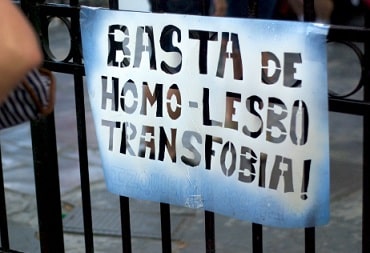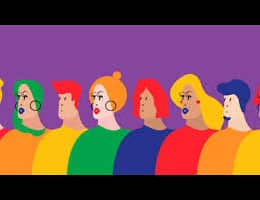 The notion of transphobia is not part of the dictionary of the Royal Spanish Academy ( RAE ). The Urgent Spanish Foundation ( Fundéu BBVA ), however, recognizes the term as correct.
The notion of transphobia is not part of the dictionary of the Royal Spanish Academy ( RAE ). The Urgent Spanish Foundation ( Fundéu BBVA ), however, recognizes the term as correct.
Transphobia is the rejection of transsexual or transgender individuals . A transsexual or transgender person, meanwhile, is someone whose gender identity does not match the sex assigned at birth .
It is important to mention that transsexual and transgender can be used as a noun or as an adjective . The shortening trans , on the other hand, is also valid.
He who manifests transphobia is transphobic or transphobic . This phobia is expressed through an aggressive attitude or behavior towards transsexuals, which can include harassment , physical violence and even murder .
Just as it happens with the terms homophobic and homophobic , no matter what the dictionaries of our language indicate, which indicate both as adjectives and only the second as a possible noun, in everyday speech its use is confused and adapted to spontaneous needs. to condemn this type of contempt that causes so much damage .
Transphobia implies discrimination . The transphobe does not treat transsexuals in the same way as other people, but rather makes trans people invisible, denigrates, attacks, etc. Transphobia is often considered to be based on sexism and the understanding that female/male categories are rigid and exclusive.
Misogyny and homophobia are also present in transphobia. Just as trans people, homosexuals and the rest of the subjects who do not fit into cisnormativity and heteronormativity challenge social norms and conventions, transphobes feel fear and hatred when mental and cultural structures are questioned.
One of the classic excuses of homophobes and transphobes is that they can “negatively” influence children, as if their sexuality were a contagious disease . Supported by this, many movements obtain approval from the authorities to continue attacking and stigmatizing homosexuals and transsexuals, both directly and indirectly.
 It is important to mention that transphobia goes beyond individual behaviors. Society , through its institutions, tends to stigmatize and marginalize the transgender community, whose members face great difficulties in finding work, accessing the health system, etc.
It is important to mention that transphobia goes beyond individual behaviors. Society , through its institutions, tends to stigmatize and marginalize the transgender community, whose members face great difficulties in finding work, accessing the health system, etc.
One of the indirect attacks that society launches against these people in a way that is as undisguised as it is justified is to put them in a sentence along with pedophiles. How can you compare a person's sexuality, something we all have, to a twisted, harmful tendency that ruins the lives of thousands of children every day? Pedophilia is a disease, and perhaps the worst, since it leads the individual to feel sexual desires for minors and, in most cases, to do everything possible to consummate them.
It is also very common to call transsexuals by their old names , those imposed on them at birth, which are also known as " dead names ." This is a very low but very common attack, since it does not require more resources to execute it than the victim 's old personal data. Just like any other aggression of this type, it can never be justified, because there is no reason or trigger beyond hatred and fear.
Transphobic humor is quite normal, although it is increasingly condemned every year. Until the second decade of the third millennium, it was common for cinema and television to provoke easy laughter with men dressed as women, focusing on their complexion to cause humor. This also reminds us that the transsexuality of someone who is born in the body of a woman but feels like a man is less visible than the opposite, just as lesbianism is not mentioned as much as the homosexuality of men.
